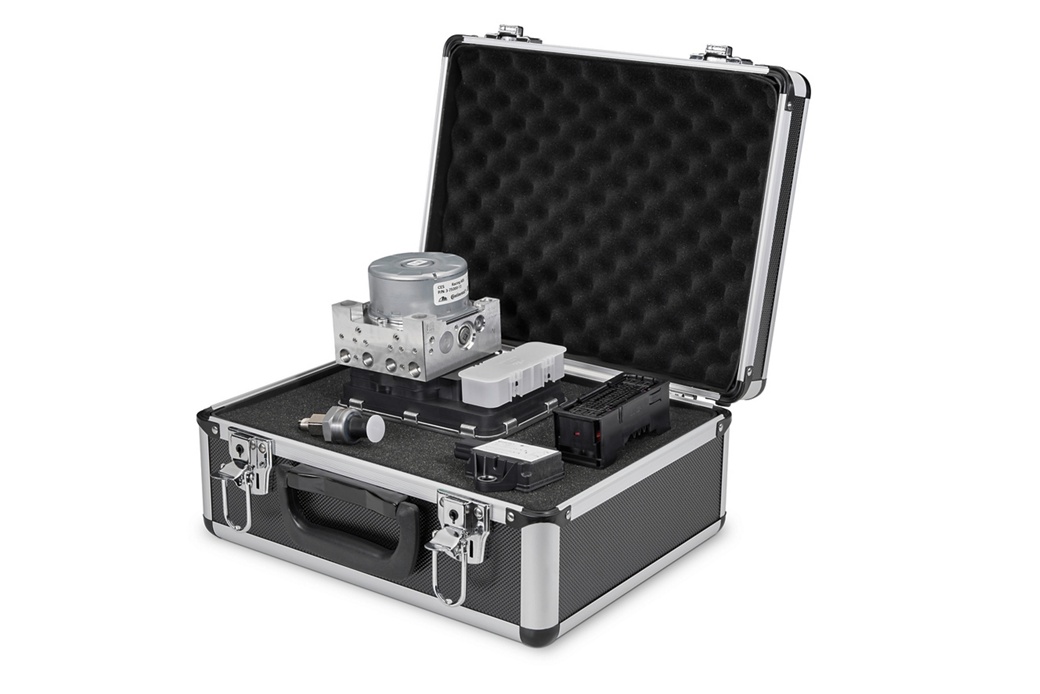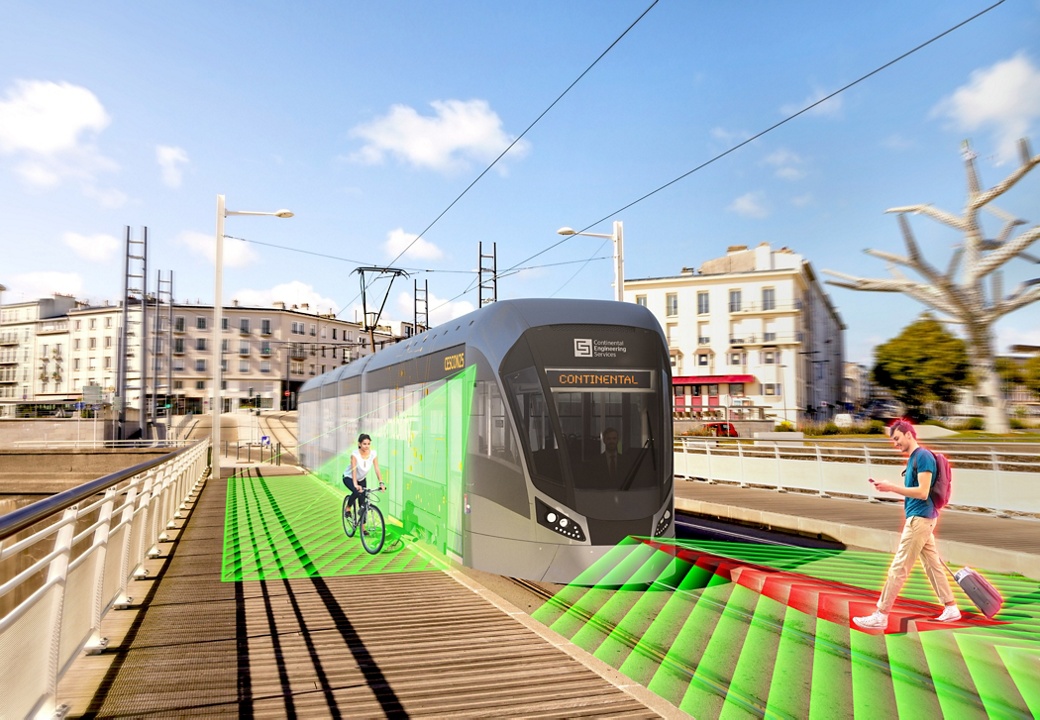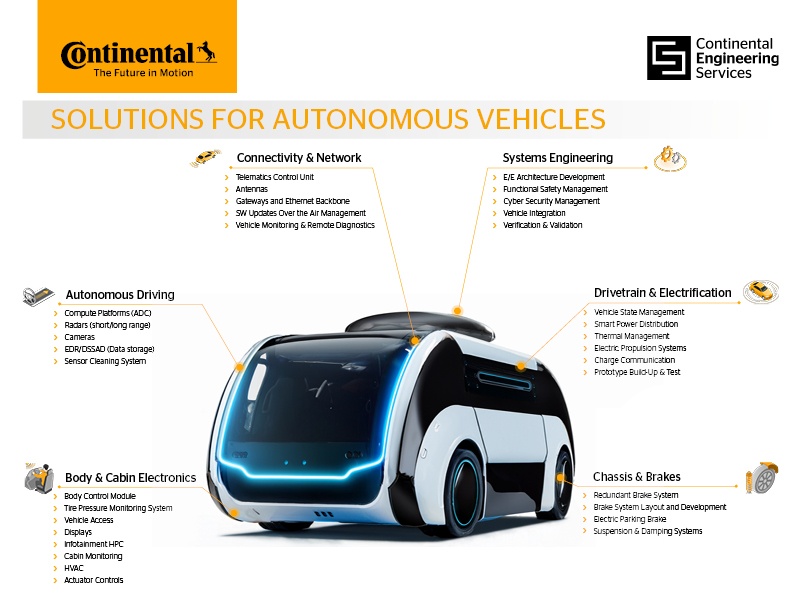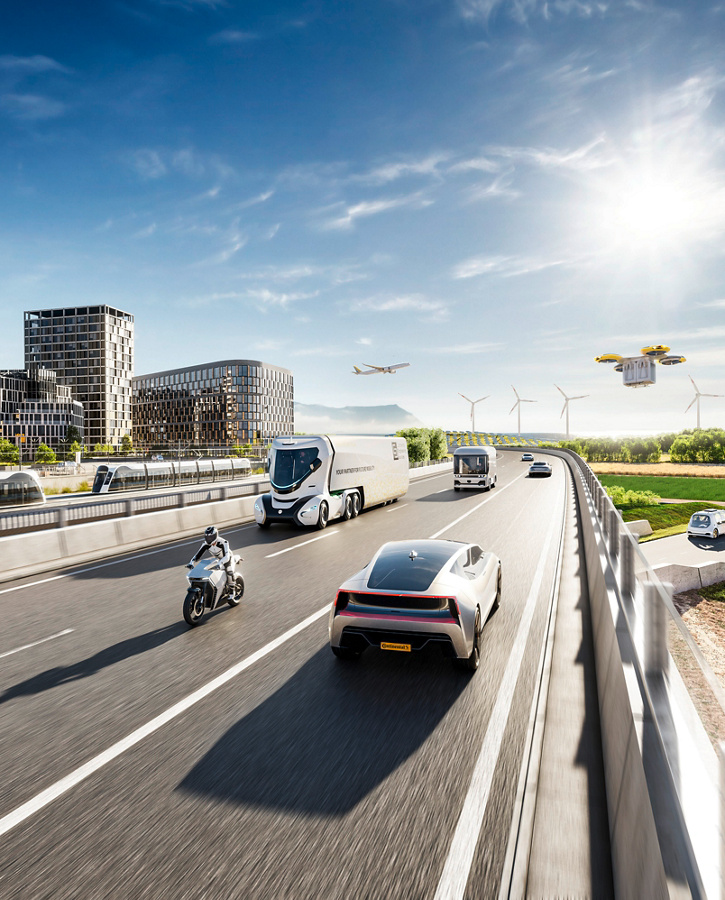1. Who are CES’s customers, and what makes them unique? What specific value do you bring to these customers that they can’t get elsewhere?
With over 2,200 employees and 20 locations worldwide, CES has been a highly sought-after development partner for mobility solutions since its founding in 2006 — both within and beyond the automotive industry. As an independent organization within Continental Automotive, CES combines the innovative strength of a technology company with the agility of a specialized engineering services provider.
In this interview, Jean-Michel Verdier discusses how CES supports customers from the automotive and industrial sectors with tailored solutions, the role of innovations like Ac2ated Sound, and why CES is a key pillar in Continental Automotive’s future growth strategy. He also explains how CES not only delivers technological excellence, but also serves as a bridge between high volume production and new application fields.
Our customer base spans six distinct groups, comprising up to 400 individual customers. Only one of these groups includes traditional, large automotive OEMs. The other five consist of niche automotive players and key mobility innovators beyond thetraditional automotive sector.
What they all value in CES is our experienced, global, and dedicated customer service. We work closely with them to develop customized engineering solutions and deliver end-to-end product offerings that are seamlessly connected to the Continental Automotive portfolio.

2. CES supports both customers in the automotive industry as well as those beyond the automotive sector. How does that dual focus influence your development strategies and solutions?
Our dual focus broadens our perspective and strengthens our adaptability. Working with both traditional automotive OEMs and forward-thinking players from adjacent or entirely different mobility sectors allows us totransfer technologies, expertise and best practices across industries.
This diversity drives us to develop flexible, scalable solutions that are technically robust and adaptable to a wide range of needs – from production as a service to custom-built innovations.
Our engineering culture continuously challenges us to increase customer centricity – helping translate customer needs into tangible solutions.
3. How do you leverage the strengths of Continental’s Automotive portfolio to develop innovative solutions for your customer groups?
CES’ mission is to create value for Automotive Operations and Technology (AOT) by bridging market opportunities with tailored engineering solutions for customers. Our close collaboration with the Business Areas is essential—not only to our own success, but also to AOT’s mission of supporting value creation for Automotive.
At CES, we complement Continental’s core technologies with innovations that are developed, adapted, and industrialized to meet the specific needs of diverse customer groups – from high-performance automotive OEMs to emerging industries.

For example, in the automotive domain, one of our flagship innovations is Ac2ated Sound, a lightweight, surface-based audio system, which has been recognized by Frost & Sullivan as an industry benchmark for its ability to reduce component weight and installation space, while delivering concert quality sound experience. We are now making Ac2ated Sound available with Dolby Atmos®, delivering an even more immersive, spatial audio.
For performance OEMs, our Motorsports ABS Kit stands out. It was developed for extreme applications like the Bugatti Bolide – a 1,600 hp hypercar for track use – and adapted for other platforms such as the KTM X-Bow GT2, where precision braking is critical.
We also go beyond automotive. In Urban Air Mobility, for example, we work with partners like HHLA Sky, a subsidiary of Hamburger Hafen und Logistik AG (HHLA), applying automotive-grade control and safety systems to autonomous drones and air vehicles.

"With innovations like Ac2ated Sound, we demonstrate how CES acts as a bridge between series production and new fields of application – actively helping to shape the future of mobility."
4. Can you share some examples where CES adapted a high volume-production technology for a niche or non-automotive application?
Adapting high-volume technologies to serve niche or non-automotive markets is a core part of CES’ value proposition. We draw on proven systems and components from the Continental portfolio and customize them for unique usecases that require a different level of flexibility or specialization.
One such example is our work in Urban Air Mobility, referred to earlier in this Q&A, where we’ve helped industrialize the X4, Germany’s first industrial drone, developed by HHLA Sky. CES contributed automotive-grade engineering and production expertise to transition the drone into series production, ensuring a lightweight, robust design suited for demanding applications like surveillance and emergency response.
In the railway sector, CES adapts automotive technologies to improve safety and efficiency in public transportation. In Timișoara, we tested a Forward Collision Warning System for trams, using radar and GPS to detect obstacles and trigger emergency braking when needed. We’ve also worked with VGF in Frankfurt on driver assistance solutions and with GCF in Italy, where our radar systems enhance safety at level crossings, even under difficult weather conditions. Through projects with Stadler and others, CES continues to apply its automotive expertise to rail, making urban mobility safer and more reliable.

We also work with niche Automotive manufacturers like Gordon Murray Automotive, contributing to the development of the T.33 sports car. CES provides tailored systems such as ESC, 48V DCDC converters, and GearedStarter Generators, ensuring high performance and safety.
Another example is our collaboration with HOLON on its autonomous People Mover, where CES adapts technologies originally developed for traditional vehicles – such as redundant braking, body control modules, and gateways, to meet the unique safety and integration needs of shared, driverless urban transport. This partnership supports the development of SAE Level 4/5-ready systems and helps bring autonomous mobility solutions closer to series production.
These projects demonstrate CES’ ability to take robust, industrialized solutions and reconfigure them for a wide variety of specialized mobility and infrastructure applications.

5. Sustainability is a major focus in the automotive industry. How is CES preparing itself to meet the sustainability demands of the industry and governance in the coming times?
At CES, we contribute to Continental’s sustainability goals with practical, engineering-driven solutions. A key example is our work with The Remakers, part of The Future is Neutral, to remanufacture DCDC converters for electric vehicles. This gives components a second life while cutting CO₂ emissions by up to 97% per unit, compared to new production, helpingreduce waste and preserve resources.
Electrification is another key area where we contribute by enabling the shift from combustion engines to cleaner, more efficient electric drivetrains. We design and integrate high- and low-voltage systems, wiring harnesses, and E/E architectures, even for small-series and niche vehicles, helping reduce emissions and energy use through safe, scalable solutions.
Another way CES supports sustainable mobility is through lightweighting technologies like Ac2ated Sound, which replaces traditional speakers with actuators that turn interior surfaces into sound sources, reducing system weight by up to 90%.
In parallel, our AI-driven tools like AI4Energy optimize system-level efficiency, further lowering the environmental footprint. Together, these capabilities empower our customers to meet regulatory targets, reduce lifecycle emissions, and accelerate their journey toward more sustainable mobility.
CES constantly tries to find applications for its engineering expertise in environmental projects. One such example is the Tree Seeding Robot, developed with Land Life. Designed for remote, challenging terrain, it uses an electric, automated module to plant seed balls with precision, enabling efficient reforestation in climate-impacted areas.
Another example is our Weed Control System, developed by CES in collaboration with and now part of ContiTech. This sustainable farming solution uses AI-supported optical sensors to accurately detect and eliminate weeds using boiling water instead of chemicals. Originally engineered by CES, it combines automotive-grade software and sensor technology to deliver precise, eco-friendly crop protection. The system is currently being validated and prepared for industrialization as a scalable tool for smart farming – demonstrating how CES technology can advance sustainability even beyond mobility.
Through these efforts, we contribute meaningfully to making mobility more sustainable – by extending product lifecycles, improving system efficiency, and exploring new applications where our technologies can have a positive environmental effect.
"We see ourselves not just as an engineering service provider, but as a strategic partner – combining the agility of a start-up with the technological access of a global corporation."
6. What is CES’ unique selling point in the market?
CES is an intrinsic part of Continental group sector Automotive and we are lucky to be able to share the technology leadership and longstanding expertise of our parentcompany.
To satisfy our customers’ needs, we operate like a “speed boat” within the larger Automotive organization – able to move quickly and respond with flexibility. This agility allows us to bring new ideas to market faster, often serving as an incubator for customized solutions that may not fit into traditional high-volume structures.
We share a deep proximity with our customers – both technically and organizationally – allowing us to act not just as a supplier, but as their trusted, extended engineering arm.
All of this is made possible by our diverse, global team of experts. CES is home to a highly skilled and motivated team of engineers who combine deep technical expertise with a hands-on, entrepreneurial mindset.
With all our above-mentioned competitive advantages, we are a valued engineering partner to our customers, proudly supporting the transition of Automotive into the adaptive powerhouse for future mobility.
Learn more about Continental Engineering Services here: https://conti-engineering.com/
